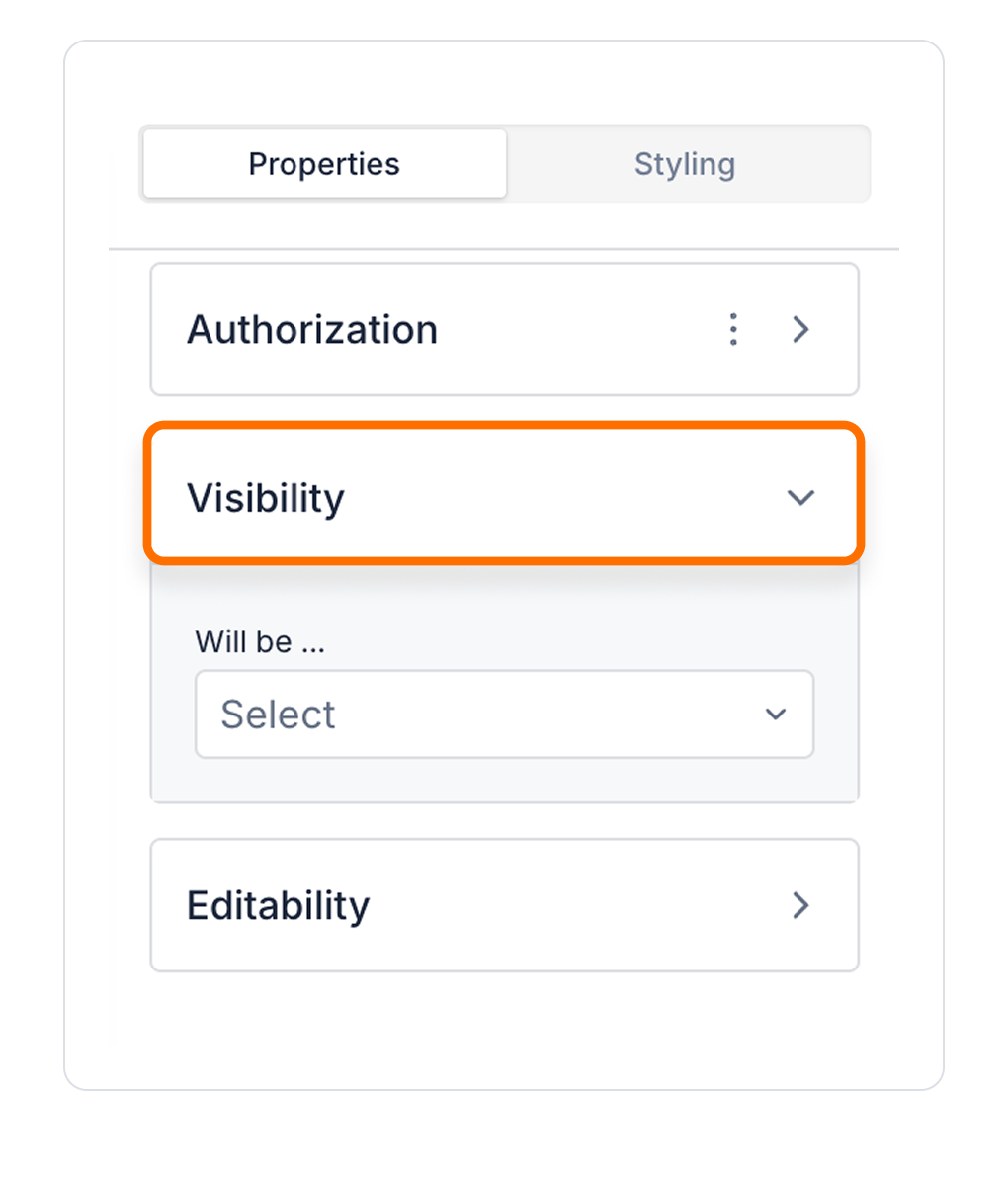

The FloatButton is an action button supported only in web applications on the Kuika platform. It can be positioned in fixed corners of the screen and is commonly used for scenarios such as navigation, adding records, quick actions, or opening a FloatPanel.


The offsetX and offsetY values are used to set the distance from the selected edge. For example:
FloatButton is commonly used to trigger a FloatPanel.

The FloatPanel is opened using a Navigate action, defined as follows:
FloatButton is an ideal solution for applications aiming to keep the user interface clean while providing quick access to actions.
Authorization

To manage access control at the element level, you can use the Authorization section in the Properties panel.
Access Types
Anonymous
Allows all users to view the element without logging in.
Restricted
Restricts access to only verified users or specific roles.
Unauthorized Behavior (Hide / Disable)
If the user does not have the required role, you can specify how the element should behave in the Choose field:
This setting is used to manage how unauthorized users encounter the element.
Visibility

Always Visible: The element is always visible.
Hidden: The element is hidden.
Sometimes Visible: The element becomes visible based on specific conditions.
When Sometimes Visible is used, AND / OR groups can be added directly, allowing visibility rules to be grouped and more complex scenarios to be managed easily.
To configure the setting:


By customizing your elements with the Styling Panel, you can create impressive interfaces for your web and mobile applications. In this section, you can configure the following settings:
By following these steps, you can configure the Area Chart element to suit your needs.